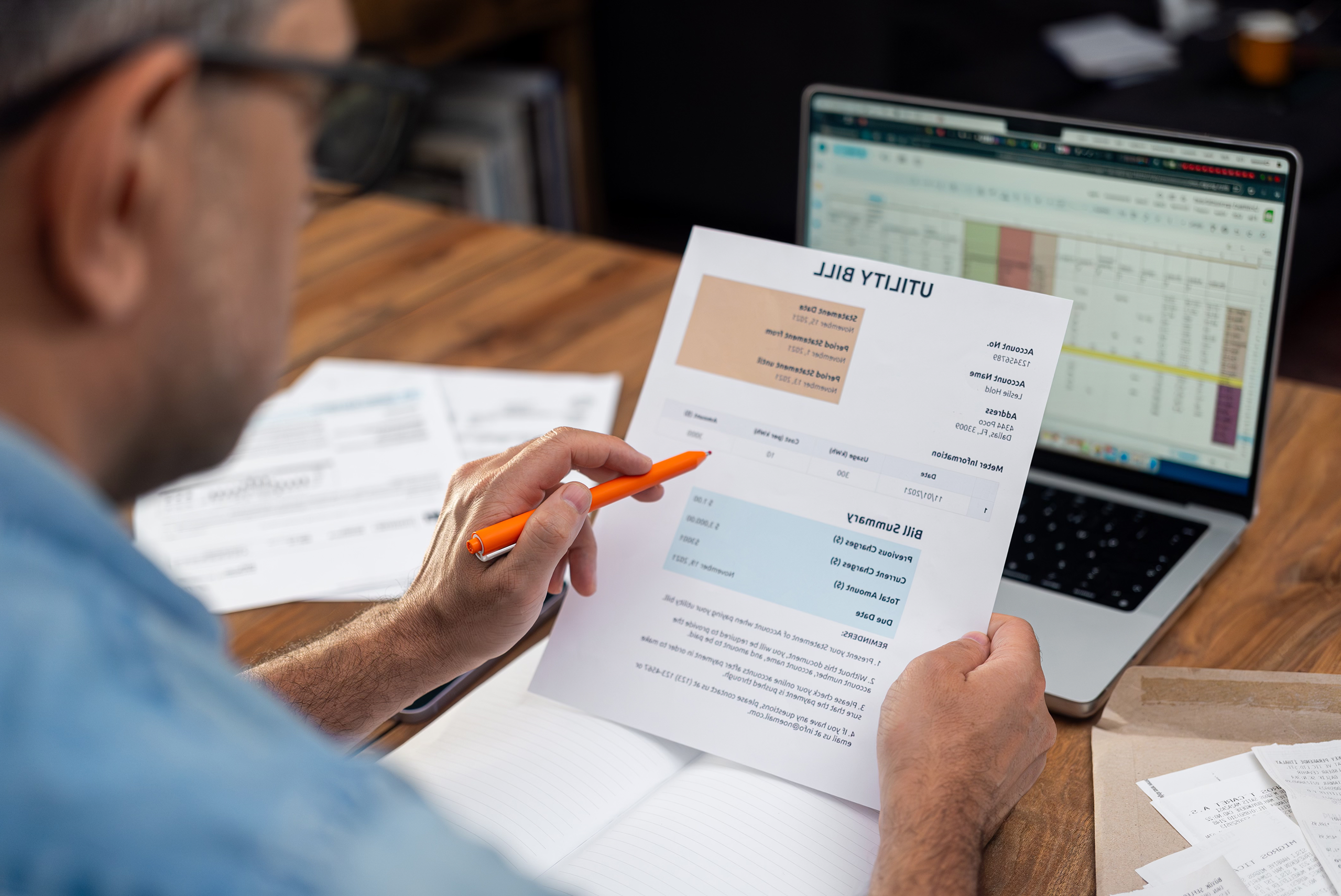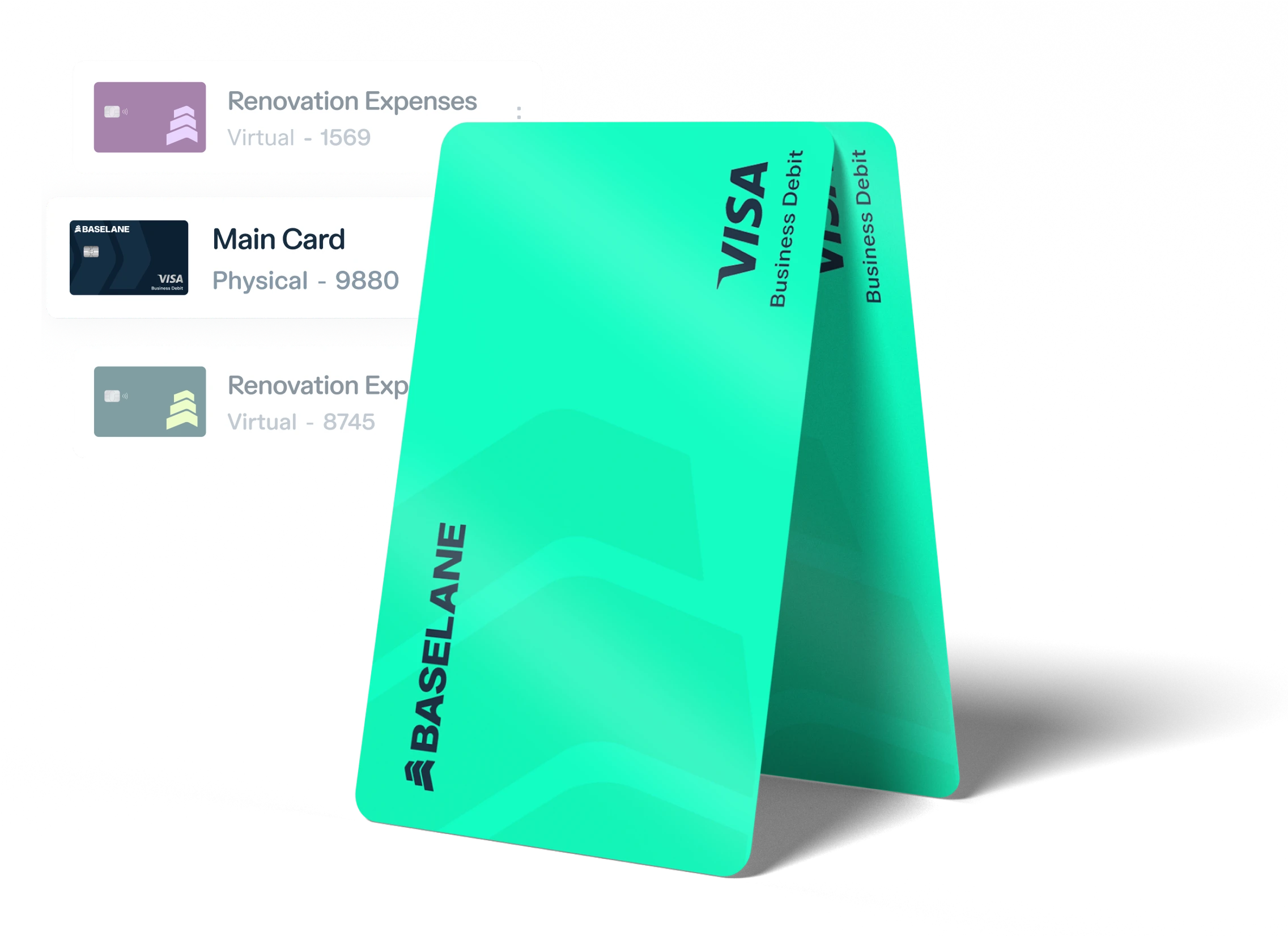Managing utility bills for rental property can quickly become a complex and time-consuming task. Juggling invoices for electricity, water, gas, and more across multiple units can feel like a constant headache. As your portfolio grows, tracking utility expenses gets harder.
Fortunately, there’s a powerful solution designed to tackle this challenge head-on: utility bill management software. This specialized software streamlines the entire process, from getting invoices to billing tenants and tracking expenses.
This guide breaks down utility bill management software—what it is, the features that matter, and how to find the right fit for your rental business.
Key takeaways
- Utility bill management software automates tracking, billing, and payments, reducing the manual workload and minimizing errors for landlords and utility bills.
- Integration with property management and accounting systems helps you understand utility consumption patterns and costs. While also simplifying how to categorize paid utility expenses on rental property for tax and reporting purposes.
- Online payment portals and clear billing statements promote transparency, build trust, and help ensure timely payments.
- Automated audits and error detection help you stay compliant with local regulations and avoid costly mistakes.
What is utility management software for property management?
Utility bill management software helps you automate and centralize utility tracking, tenant billing, and payments across rental properties. It acts as a dedicated utility management system built to handle the complexities of rental operations.
Core features typically include:
- Automated invoice processing & auditing: Capturing data from utility bills (often via uploads or direct feeds), verifying charges, and flagging potential errors or anomalies.
- Utility billing & statement generation: Automatically calculating and generating utility bills for tenants based on usage, allocation formulas (like RUBS – Ratio Utility Billing System), or flat fees. Some systems offer convergent billing, combining rent and utility charges onto one statement.
- Online payment collection: Providing portals for tenants to view bills and make payments online via ACH, credit card, etc. This often includes features for utility management services.
- Reporting & analytics: Generating detailed reports on utility consumption patterns, costs, recovery rates, and variances, providing valuable insights for budgeting and conservation efforts.
- Resident portals: Offering tenants a platform to view their utility usage, billing history, and make payments easily.
Why landlords can't afford to ignore utility management software
Relying on manual methods like spreadsheets or paper files for managing utility bills for rental property might seem feasible initially, but it quickly becomes inefficient and risky as your portfolio grows.
Consider the pitfalls of manual utilities management:
- Major time constraint: Hours are lost each month manually entering data from invoices, calculating tenant shares, creating bills, tracking payments, and reconciling accounts.
- Costly errors: Manual calculations are prone to human error, leading to lost revenue, over-billing, missed charges, or failing to catch expensive utility provider mistakes. Late payment fees due to oversight can also add up.
- Scalability nightmare: Managing utilities manually for a handful of units is tedious; doing it for dozens or hundreds becomes unsustainable, holding back your portfolio growth.
Transitioning to a dedicated utility billing management system mitigates these risks significantly.
Banking Built for Real Estate Businesses
Open unlimited accounts for properties and security deposits with no monthly fees.
The benefits of utility bill management software for your rental business
Implementing utility bill management software offers a lot of advantages that directly impact your bottom line:
- Boost productivity: Automate tasks like data entry, calculations, and billing so you can focus on tenant relationships and property improvements.
- Lower operating costs: Lower operating expenses for rental property are crucial. So, spotting errors, leaks, and unusual usage early with analytics helps. Avoid late fees with automated reminders and uncover opportunities to reduce utility expenses.
- Improve accuracy: Minimize manual errors for cleaner records and fewer billing disputes.
- Enhance tenant experience: Send clear, on-time bills with easy online payment options and usage history, building trust and transparency.
- Better financial oversight: Gain clear visibility into utility spending patterns across your portfolio with robust reporting. This data integrates seamlessly with tools like rental property accounting software, providing a complete financial picture.
A Comparison of manual spreadsheets vs. utility management software
Still relying on spreadsheets? Here’s why switching to software can dramatically improve utility billing operations:
| Feature | Manual / Spreadsheets | Utility Management Software |
|---|---|---|
| Efficiency | Hours spent on data entry, calculations, and billing | Automated data capture, billing, and calculations |
| Accuracy | Typos, formula errors, and missed charges are common | Validation checks and audits reduce costly errors |
| Scalability | Breaks down with more units or complex billing | Effortlessly handles large portfolios & billing models |
| Cost Recovery | Missed charges, no easy vacant unit tracking | Accurate billing helps recover full utility costs |
| Reporting | Basic, time-consuming reports | Automated, customizable reports on usage & cost |
| Tenant Experience | Manual bills, no online payments | Tenant portals, clear e-bills, flexible payments |
| Integration | No sync with accounting or property tools | Syncs with PM and accounting software |
Must-have features in utility management software
When looking at different utility management software options, prioritize these essential features:
- Integration capabilities: This is crucial. The software should seamlessly integrate with your existing rental property management software and financial tools. This ensures smooth data flow for rent rolls, lease terms, and financial reporting, potentially linking to your dedicated landlord bank account.
- Billing flexibility: Support for various billing methods is vital, including individual submeter readings, Ratio Utility Billing System (RUBS) calculations based on square footage or occupants, and fixed/flat-rate billing.
- Invoice management: Look for features like automated invoice capture, duplicate invoice detection, and robust auditing tools to catch errors. Integration with no-fee checking accounts payable functions is a plus.
- Payment processing: Offer secure, flexible online payments via ACH or card, with features like auto-pay, reminders, and real-time tracking to improve collections.
- Advanced reporting: Access detailed reports on usage trends, costs per unit, recovery rates, vacant unit expenses, exceptions, and budgeting.
- Resident portal: Give tenants a simple way to view bills, track usage, make payments, and submit utility-related requests.
- Easy to use: Choose software with an intuitive interface that’s quick for you and your team to learn and navigate.
Key utility categories your management software should handle
A strong utility bill management system should cover all utility expenses tied to the landlord’s utility responsibility. That includes:
- Core utilities: Electricity, gas, water, sewer, trash, and recycling
- Communication & connectivity: Internet, cable, and phone lines
- HVAC & climate control: Central heating/cooling, boiler or AC maintenance
- Building & common areas: Lighting, elevator power, lobby utilities, security systems
- Shared amenities: Laundry, pool, sauna, and fitness center utilities
- Outdoor maintenance: Irrigation systems, outdoor lighting, electric gates or fences
Choose software that supports the specific mix of utilities your properties require.
Tips on choosing the right utility bill management software
Finding the best utility bill management software requires careful consideration of your unique needs:
- Assess your needs: How many units do you manage? What utilities are involved? Are you using submetering, RUBS, or flat fees? Identify your biggest challenges.
- Prioritize integration: How well does it connect with your core rental property management software and rental property accounting software? Does it facilitate easy data transfer to your real estate bank account?
- Review reporting features: Look for reports that support budgeting, cost control, and recovery tracking. Can they be customized to your needs?
- Consider user experience: Is the interface easy for your team to use? Is the tenant portal clear and accessible? Always test with a free trial or demo.
- Understand pricing models: Check if pricing is per unit, per bill, or a flat rate. Watch for setup fees and confirm it fits your budget and ROI goals. Look for providers with the best tools for landlords.
- Check customer support: What channels are available—phone, email, chat? Read reviews to see how responsive and helpful the provider is.
Top utility bill management software
There are plenty of utility expense management options out there—some built into full property management platforms, others offered as standalone tools. Providers like Baselane, Zego, RealPage, Yardi, Entrata, and Conservice serve a wide range of needs, from small landlords to large-scale operators.
Instead of comparing features line by line, focus on core capabilities like billing automation, utility tracking, cost recovery, and integration. That way, you’ll find a solution that fits your specific portfolio and workflow.
A comparison of utility bill management software
Here is a comparative table of the top utility bill management software.
| Evaluation Criteria | Baselane | Zego (RealPage) | Yardi Energy Solutions (YES) | Conservice |
|---|---|---|---|---|
| PM Software Integration | Integrations for any-sized portfolios | Strong integration with PM software | Seamless within Yardi | Integrates with many PMS via APIs |
| Accounting Integration | Built-in banking + auto expense tracking | Compatible with RealPage Financials | Full Yardi financial suite | Works with most accounting platforms |
| Billing Flexibility (RUBS/Submeter) | Manual entry | Full RUBS & submeter support | RUBS + smart metering | Customizable billing setup |
| Automated Invoice Capture | Not yet supported | Yes (SmartSource) | Yes (invoice ingestion tools) | Yes (workflow automation) |
| Online Tenant Payments | ACH & debit rent collection | Zego Pay | Yardi RentCafe | Through integration with utilitiesinfo.com |
| Reporting Depth | Property financial reports | Advanced analytics | Deep sustainability + utility analytics | Custom reporting tools |
| Vacant Unit Tracking | Not available | Tied to occupancy feeds | Fully supported | Core feature |
| Ease of Use | Clean, intuitive UI for landlords | Modern UI | Complex for small teams | User-friendly onboarding |
| Pricing Structure | Free to sign up | Enterprise pricing | Custom quotes | Custom quotes |
| Customer Support | Fast, U.S.-based support | Good for large clients | Provides phone call support | Account reps |
Consider exploring options mentioned within lists of the best property management apps or the best landlord app, although utility management might be just one component. Specific needs for larger operations might look towards property management software for multifamily.
Is utility billing management software right for small, medium, or large portfolios?
The right utility bill management software often depends on the size and complexity of your property portfolio.
- Small landlords (1-10 units): Manual methods or simpler features within general property management for small landlords software might be fine if utility arrangements are straightforward. However, if dealing with RUBS, master meters, or significant common area costs, dedicated software can provide value even for smaller portfolios by saving time and ensuring accuracy.
- Medium portfolios (11-100 units): The benefits of automation, accuracy, and reporting become much more pronounced. Manual management becomes highly inefficient and risky at this scale. Dedicated software within robust property management platforms is highly recommended. This aligns with needing more advanced rental management techniques.
- Large portfolios (100+ units): Dedicated utilities management software is generally considered essential for operational efficiency, cost control, and tenant satisfaction at this scale. Enterprise-level solutions often offer advanced analytics, bulk processing, and deeper integration capabilities.
Streamline your utility management with Baselane
Managing utility bills and rental finances can be streamlined with the right tools. While utility management services pay bill payments and tenant invoicing, integrating a comprehensive financial platform like Baselane ensures seamless financial oversight.
Baselane offers landlords a suite of features to manage rental property finances effectively:
- Automated rent collection: Set up in minutes to receive on-time payments via ACH or card, with automated reminders and late fees.
- Landlord banking: Open multiple accounts to separate funds by property, earn up to 3.35% APY², and manage expenses for a rental property with ease.
- Simplified bookkeeping: Track income and expenses in real-time, auto-categorize transactions, and generate financial reports, including Schedule E, effortlessly.
By integrating Baselane into your operations, you can enhance financial clarity, save time, and focus more on growing your rental portfolio. Sign up for free today!
FAQs
Most utility management tools integrate with popular PM platforms, syncing resident data, lease terms, and transactions to reduce manual entry. Be sure to check compatibility with your system.
Yes, many platforms support RUBS. You can set formulas based on factors like square footage or occupancy, and the system will apply them automatically in line with local rules.
Not usually. Most modern platforms are user-friendly and offer onboarding help. Setup typically involves entering property details, resident info, and utility accounts. Request a demo to see how it works.
Support varies by provider, but common options include email, phone, live chat, knowledge bases, and account managers for larger clients.
Advanced tools help track billing laws by location, ensure required disclosures, and create audit trails. Still, landlords are responsible for final compliance.







